On big missions and solo climbs I listen to cheesy pop music like Katy Perry and Taylor Swift to keep me going. I am not ashamed.
I started climbing in college after a friend of mine randomly invited me to go to the local climbing gym one evening to relax from all our school work. For a year or so it was just something I did once a week, but after studying abroad in Chile and spending some time just hiking around Patagonia I was really inspired to spend more time outside and learn how to climb huge, remote mountains.

Julian Poush slices up the “Awesome Splitter” pitch of the Northwest Ridge of Aguja Mermoz during the second ascent of The North Pillar Sit Start, Argentine Patagonia.
I started sport climbing outside when I came back from South America and learned how to ice climb and climb cracks/place gear. It was a massive revelation for me to learn about just how much terrain is available to you if you know how to jam, place your own gear, build anchors, and move through mountain terrain. How cool is it that you can just walk up to some beautiful wall in the mountains and climb it without leaving anything behind?
Now it’s almost funny to think back to when this was such a big realization, but when I take a step back it’s still a pretty cool thing to think about. In the summer of 2010 I did my first “alpine” climbs in the High Sierra and Tetons, and in 2011 I really started to become a “climber,” living out of my van for most of that year and climbing around the American West. Multi-pitch granite crack climbing is probably my favorite style, especially in the mountains, though I actually really enjoy bouldering in the climbing gym. Kind of a strange combination, I know, but hey, that’s me.
Related: 4 Steps for How to Transition to Alpinism
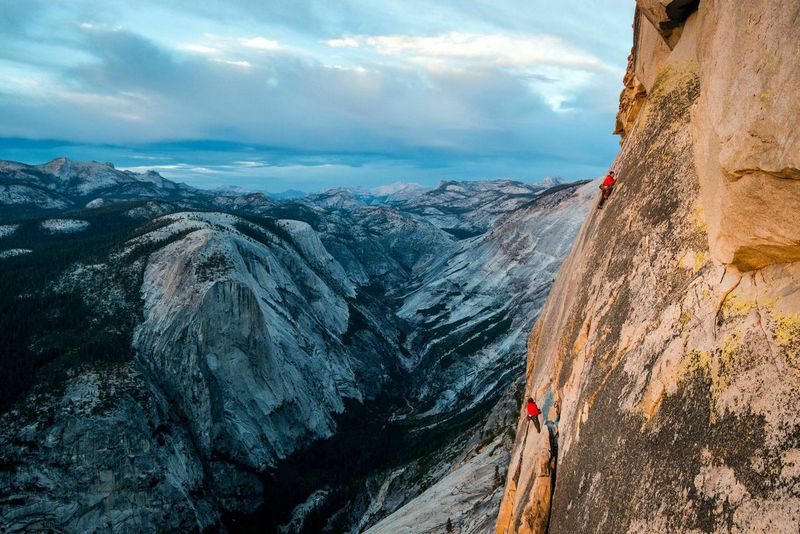
Jesse Huey and Will Stanhope climbing the last hard pitch of The Regular Route (5.12) on Half Dome in Yosemite Valley.
Climbing was my gateway into the world of photography, filmmaking, and creativity. I never would have considered myself artistic growing up, and I never even picked up a camera until I was almost done with college. But as I got into climbing, became part of the climbing community, read stories in climbing magazines, watched climbing films, I was deeply inspired by the passion, love, and effort that permeated the sport and culture. I discovered a deep desire within myself to not only get out and go climbing in these wild, beautiful places, but to share that inspiration with others.
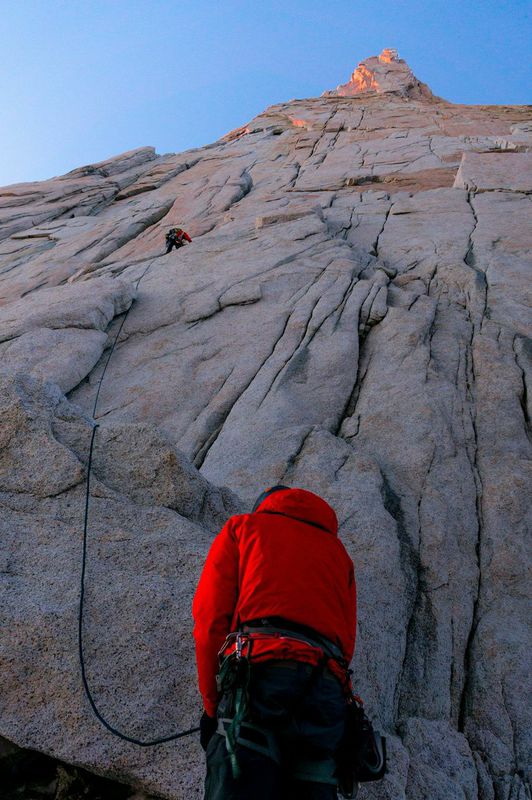
Kevin Prince starts up the Goretta Pillar of Fitz Roy at dawn on the second ascent of The North Pillar Sit Start, Argentine Patagonia.
In 2011 I quit my job at the university I’d attended, moved into a minivan, bought a camera and some editing software, and spent seven months living on the road. I taught myself (slowly) how to use the camera and tried my best to document the interesting and inspiring things that I saw along the way. I found that I really loved storytelling and capturing the climbing life in photos and video.
Through a lot of trial and error, a bit of luck, and a lot of serendipity, I learned enough to land a job working for Duct Tape Then Beer, a small outdoor media firm in Seattle. I worked there for two years as an editor, director, and cinematographer, and had the incredible opportunity to work on a number of award-winning adventure films such as The Road from Karakol, 35, and The Gimp Monkeys, as well as fun projects like the spoof video First Light.
Related: 9 to 5 Ruins Lives
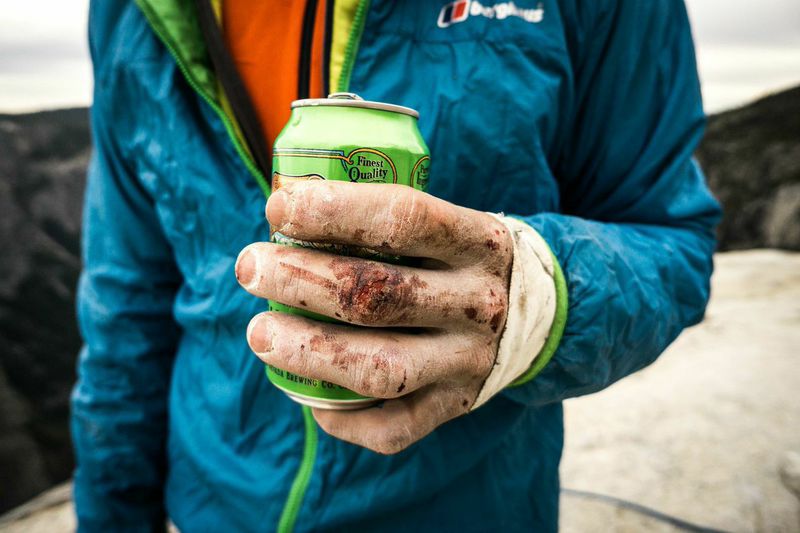
Free climbing El Capitan takes its toll, but beer on the summit makes it all worth it.
In June, 2014, I did the first car-to-car ascent of the Evolution Traverse in less than 24 hours. The Evolution is really big—about eight miles of technical ridge climbing up to 5.9, mostly above 13,000 feet, and going car-to-car adds about 26 miles of hiking with over 5,000 feet of elevation gain.Completing it was easily the hardest I’ve had to push myself physically on a climb. It’s funny, because it’s not that difficult of a route. I probably only climbed a couple of moves harder than 5.8, mainly because I got off-route at one point, but it’s so long and sustained that it’s quite mentally taxing to be “in the zone” for that long. I ended up spending about 12.5 hours on the ridge itself, and on the hike out I got terribly lost in the dark and had to run the final six miles to beat the 24 hour mark.
Related: A Hidden Yosemite Climbing Gem: The Matthes Crest Traverse
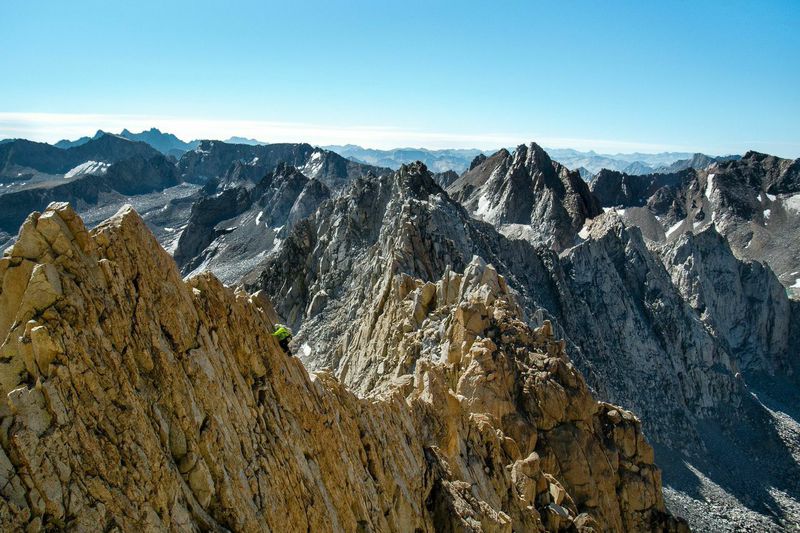
Matt Van Biene surfs the great granite wave of The Evolution Traverse (5.9), High Sierra, California.
In the end I squeaked in with a time of 23:58.
I had a rule that every time I felt like stopping I would push myself to move a little quicker, and I only truly stopped a handful of times. About 3/4 of the way through the traverse I felt pretty worked, but I knew that I was never going to try to do it again, and that I only had this one shot if I wanted to make it happen. That thought gave me the fire to dig deeper and just keep moving. It might sound strange, but I was inspired to try to do it because of myself.
I had climbed the traverse with a friend the previous summer, and we soloed the ridge in a long day from a base camp. I was psyched that we had done it and knew that I was capable of more. So the desire to try it car-to-car in a day came mostly from just wanting to see if I could do it; to see just how much I was capable of. While no one else has done it in less than a day, I’m sure someone will, and I’ll look forward to commiserating with them about the pain in their knees.
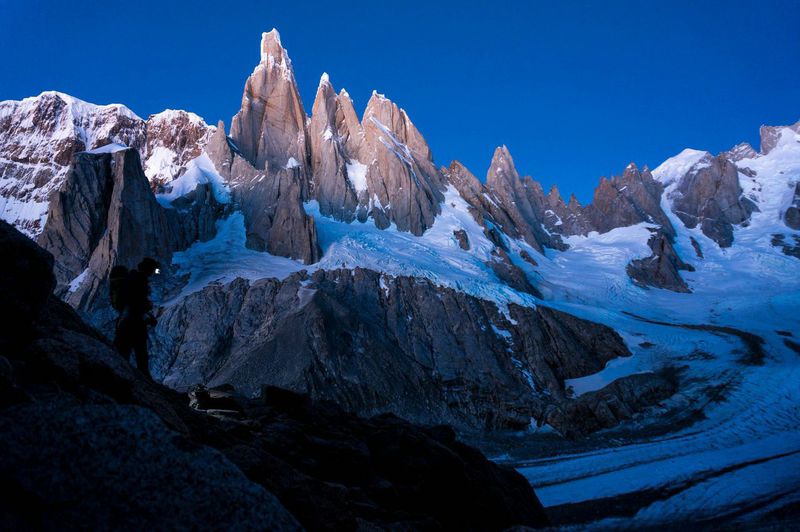
Julian Poush gets ready for another long day of climbing in the Torre Valley, Argentine Patagonia.
Easily the proudest moment I’ve experienced while climbing was when I climbed the Care Bear Traverse; a 6,500-foot linkup of Aguja Guillaumet, Aguja Mermoz, and Cerro Fitz Roy in Argentine Patagonia, with Cheyne Lempe in early 2013. We spent three days on the route and another long day rappelling off of Fitz Roy, and when we came back I felt like a different person.
It was by far the biggest route I’d ever climbed at the time, and pushed me way past what I’d thought I was capable of accomplishing. It took everything I had and knew about climbing: free climbing steep cracks, navigating complex ridges, traversing snow slopes, aid climbing icy cracks, moving quickly with a pack on in order to succeed. And to do it with someone like Cheyne, who I look up to and admire for his own climbing accomplishments, was really special.
Related: Lucky Monkey, The Adventures of Cheyne Lempe
It was a moment where I realized just how possible it is to turn your dreams into reality, and I constantly think back to that experience when I have doubts or concerns about a route or really anything I am doing in life.
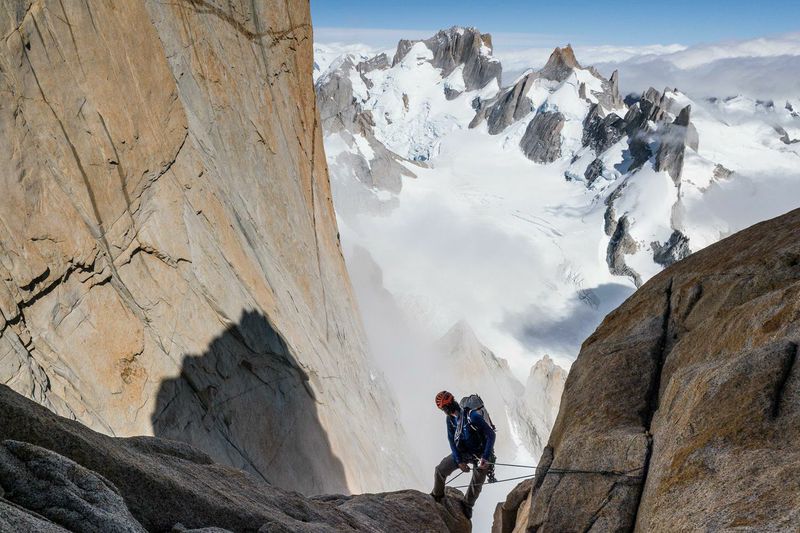
Cheyne Lempe on The Care Bear Traverse in Argentine Patagonia.
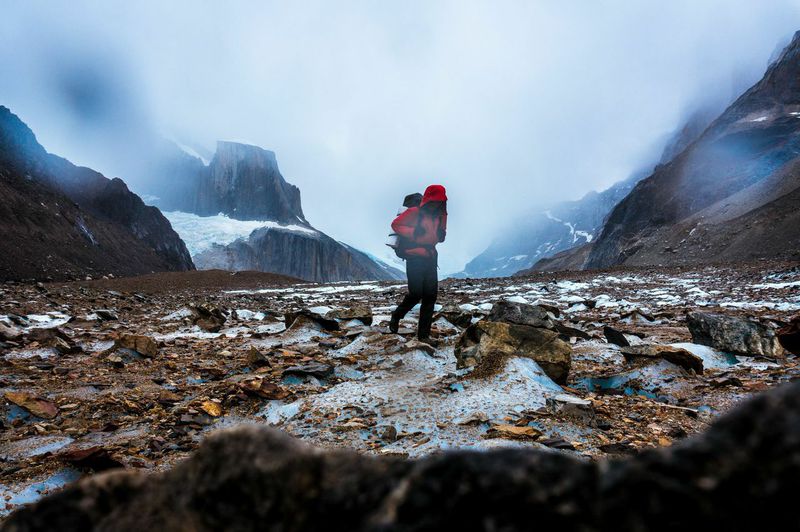
Julian Poush hikes out of the Torre Valley, Argentine Patagonia.
From a photography perspective, maybe my proudest moment came last winter when I shot video and photos of Tommy Caldwell and Alex Honnold climbing in Patagonia. One day we went out to shoot on one of the iconic spires of the Fitz Roy massif, and it required that myself and a partner get up way before dawn, hike up 4,000 feet to get perspective of Tommy and Alex climbing a route, and then cross a couloir and climb a 1,200-foot route of our own to reach the summit before them and shoot more photos and video from above.
Related: Tommy Caldwell & Alex Honnold in Patagonia
Trying to keep up with guys like Tommy and Alex is never easy, especially in an alpine environment, but we were able to make it happen. As the sun began to set on the incredible landscape of rock and ice around us, I stood on the summit of this wild Patagonia peak and captured Alex climbing the final pitch to the top. It was one of those special moments where I felt that I was in the right place at the right time, had to use all of my skills as a climber and photographer to pull it off.
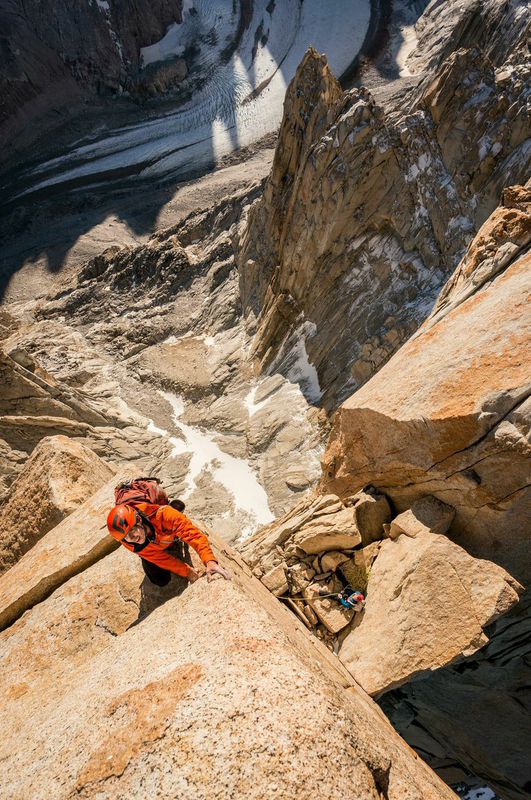
Alex Honnold tops out Blood on the Tracks (5.12) on Aguja Rafael-Juarez in Argentine Patagonia.
I want to inspire great memories and personal growth.
By that I mean that I hope my photos and stories can inspire others to go to wild places with close friends and have meaningful experiences that push them both physically and mentally. Whether that comes through climbing, or fishing, or hiking doesn’t really matter to me. We all share those incredible experiences regardless of sport, and that’s what draws so many of us back time and time again.
If I can inspire people to want to go do that, that would make me happy. A big part of that to me is capturing not just the beautiful, majestic moments that we’re so used to seeing in outdoor media—perfectly framed shots of climbers in epic locations—but also the smaller, gritty moments that make the climbing lifestyle so special and meaningful.
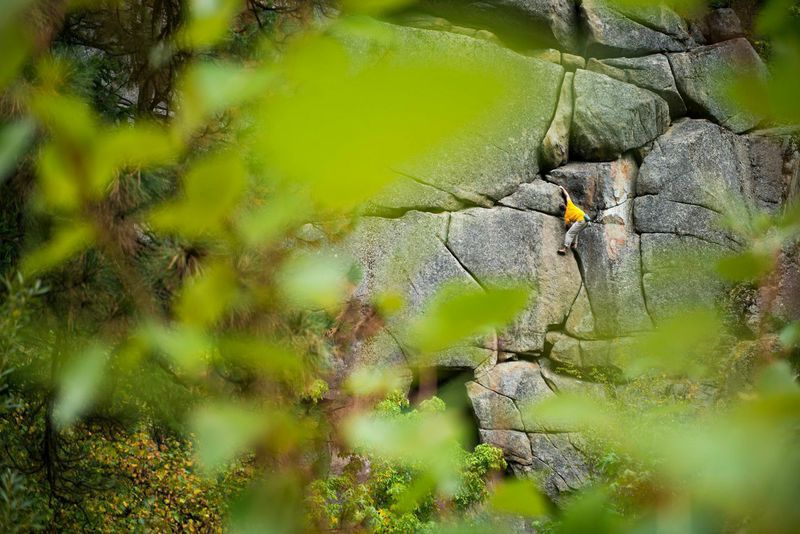
Jens Holsten runs another lap on the solo circuit outside of Leavenworth, Washington.
I absolutely have doubts about my life.
Who doesn’t? My income is crazily sporadic, I’m currently trying to figure out if I even have enough money to pay my taxes, my old minivan is on the verge of death—basically I regularly worry if I’m going to be able to keep doing this financially. That said, I would never try to say that my life or lifestyle are “hard.” Compared to the vast majority of people in America, not to mention the rest of the world, the life I live is very easy.
Sleeping in your car, cooking on a Coleman stove, working in coffee shops, it’s nothing compared to going to war or working hard manual labor. And so even when I worry a lot, I know that I am incredibly privileged to even have the choice to live the way I do. I don’t really feel any pressure to get a “regular” job or change my life, but the money sounds very enticing at times.
Related: Is Dirtbagging Really Dead?
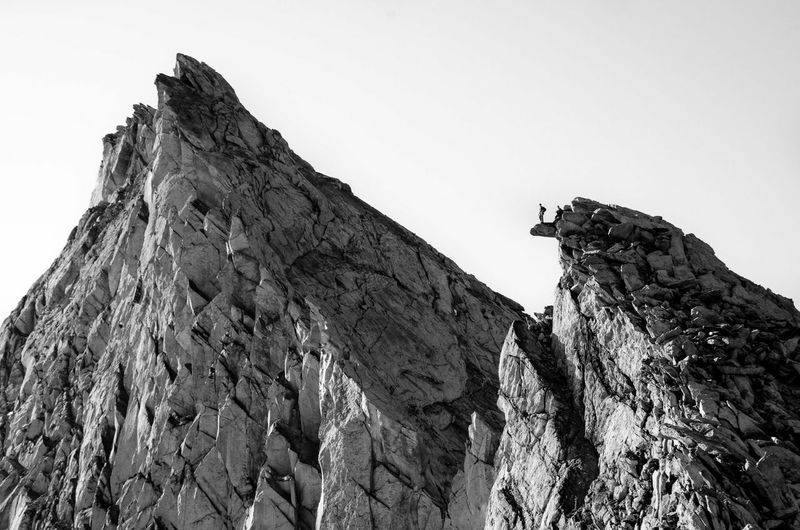
Sam Radcliffe steps out on the diving board on the North Ridge of Mt. Conness (5.6), High Sierra, California.
The thing I love most about rock climbing is the wild places it can take you.
High up on an exposed big wall, inside an otherworldly ice couloir or waterfall, perched atop an epic alpine ridge—it is being in these incredibly beautiful and hard-to-reach places that keeps bringing me back to climbing and to the mountains. I just love the feeling of being part of a beautiful landscape for a brief moment in time. Those moments when you say to yourself,
Holy shit I am really here right now?!
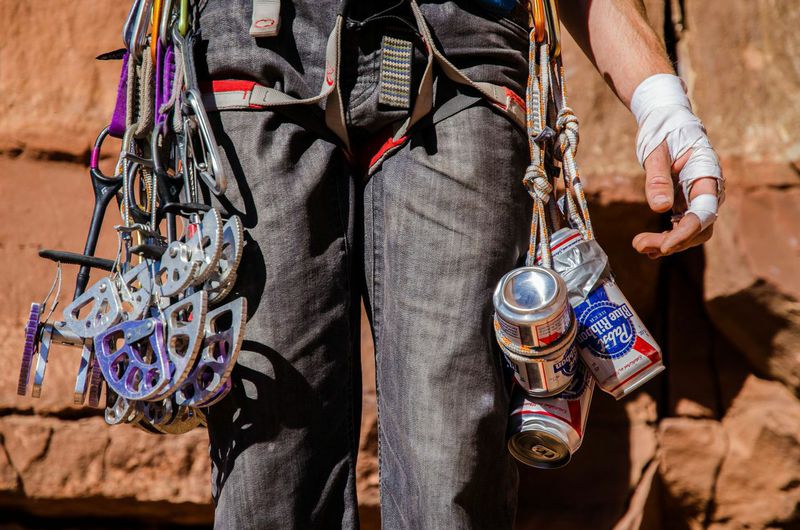
Scott Bennett puts together the perfect rack for The Big Baby (5.11) in Indian Creek, Utah.
I know other climber/photographer types who say that they have to decide before going out whether they’re going to have a climbing day or a photography day. To me it’s usually not that simple. I have a lot of big (for me) goals as a climber that have little to do with photography.
I want to free climb El Capitan, speed climb big walls, put up new routes in the mountains around the world, and push myself physically and mentally through climbing. For some of those goals, if accomplishing them meant not having a camera with me or documenting the experience, I would be fine with that.
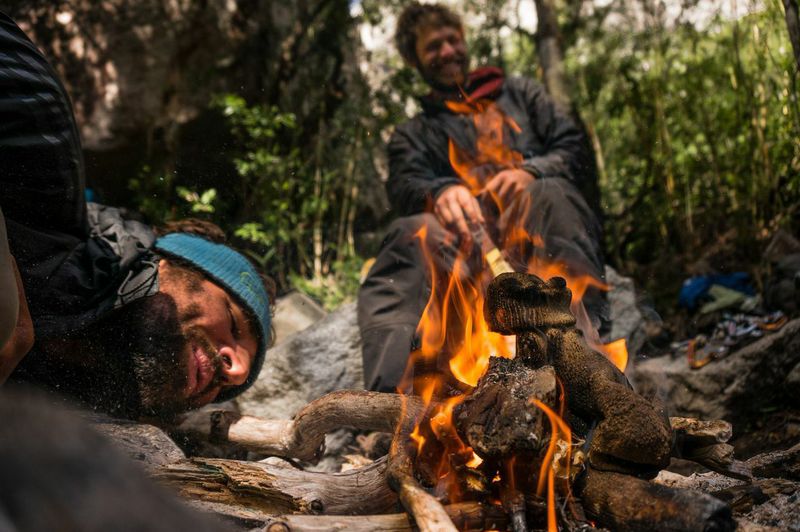
After a lifetime of blood, sweat, and smears, Chris Kalman puts his socks in their rightful place on the funeral pyre, Cochamo, Chile.
For example, I climbed The Nose on El Capitan in a day last year and didn’t bring a camera because I thought it would slow me down. It was an incredible experience and I have wonderful memories of it even if I don’t have photos. But in general I will always try my best to find some way to capture the experience and share it with others. Because I make my living as a photographer and because you never know when you might see “The Shot.” I almost always carry a camera around with me, especially when I’m climbing.
Some of the best shots I’ve ever taken have been with my cheapest camera in less-than-perfect conditions, but because I decided to at least bring a camera I was able to capture them. And it’s those rare moments when most people don’t have a camera with them or choose not to pull it out that I want to try and capture. It’s an ongoing process that I still fail at time and time again, but that I’m constantly learning from and trying to improve.
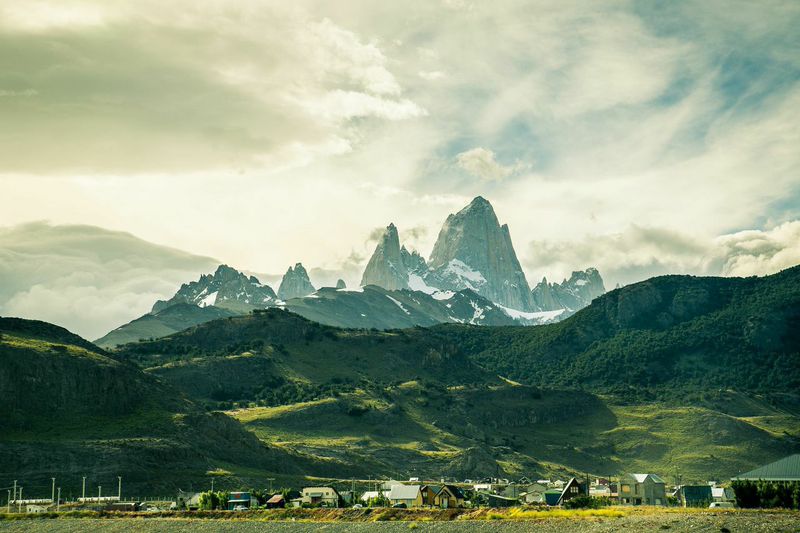
The Fitz Roy massif looming above the small town of El Chalten, Argentine Patagonia.
In the past three years I’ve had unexpected and awesome opportunities to work with many of the best climbers in the country. People like Tommy Caldwell, Alex Honnold, Mikey Schaefer, Will Stanhope, Ethan Pringle, Cedar Wright, Colin Haley, Hayden Kennedy, Steve House, and many, many others, some of whom are well known and many of whom fly under the radar despite possessing incredible climbing talent. Most I’ve met just through living the climbing lifestyle, others I’ve met through more direct work projects. I feel fortunate to call all of them friends.
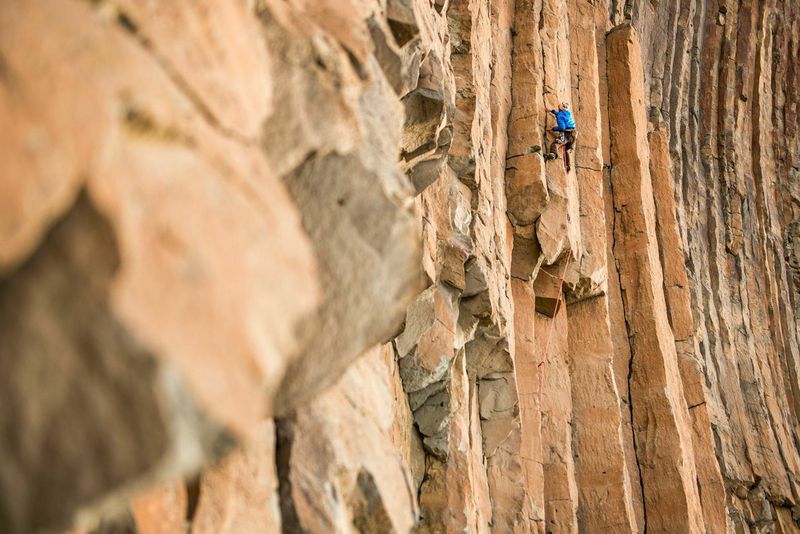
Coleman “Troutman” Blakeslee puts up the first ascent of Young Gaucho (5.11-) at Cerro Colorado, Chile.
Perhaps the single most important thing that I’ve learned from spending so much time with so many “famous” climbers is that they are nearly all just regular people trying to figure out life like the rest of us. While they happen to be very, very good at staying attached to and ascending steep cliffs, they don’t have some secret recipe for success or for living a perfect life. Far from it. They all have skeletons in their closets, they fight with their girlfriends, they worry about money, they get depressed.
Most are really nice, respectful, interesting people. Some are assholes. When you hang out with them maybe the thing that sticks out most is just how normal they are. And yet, all the time I see people come up to them and treat them like Hollywood celebrities, shyly asking for photos, pointing at them from afar (yes they see you doing this), raising them up on these pedestals simply because of their climbing accomplishments, or more often, because of how their climbing accomplishments and personalities are portrayed by the media and their various sponsors.
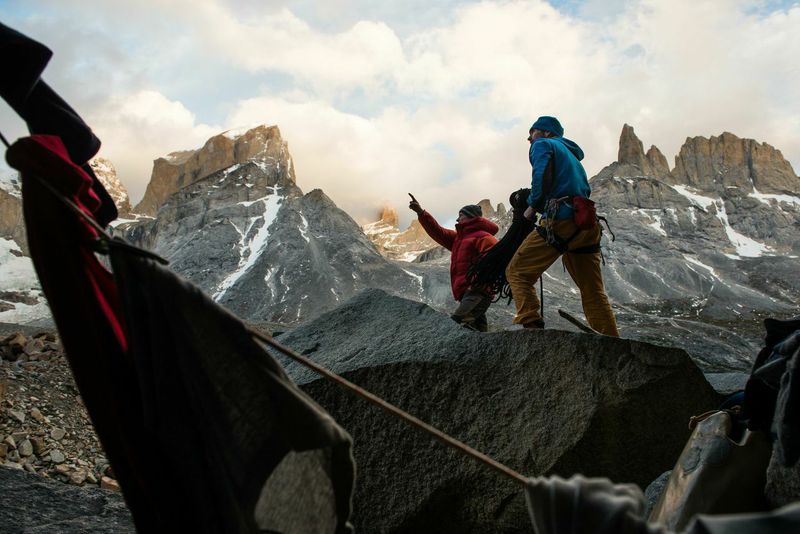
Stephan Isensee and Tobias Wolf look for new lines in The French Valley, Torres del Paine, Chile.
I think that this attitude all too often leads to the mindset that it is impossible for “normal” people to go out and accomplish the same types of feats or have the same types of experiences as these famous climbers. This is unfortunate, because I believe the opposite is true. While many of the most respected climbers in the country do indeed deserve that respect, I think it should come from the fact that they are kind friends, loving husbands and wives, and give back to their community, rather than just because they are good climbers.
Related: Featured Photographer: Jon Glassberg
Thanks for sharing your passion and insights Austin! We wish you the best of luck in your upcoming adventures!

![Featured Photographer: Austin Siadak [Full Interview]](https://mojagear.com/wp-content/uploads/2015/04/austin-siadak.jpg)






